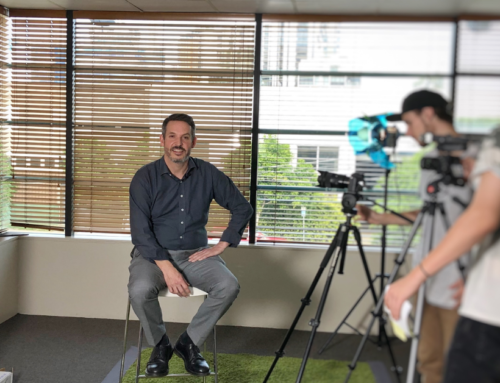Hello 2021!
Quotes, memes and messages have been flooding social media heralding the start of a new year and encouraging us to leave challenges of the old year behind. We’re reminded of fresh starts, new beginnings, and a blank slate to craft our own story of 2021.
Meanwhile, we’re in the midst of a global shared experience that has reminded us that we can’t control everything. We’ve learned that the best strategies and plans can be derailed at a moment’s notice, and that we have to be ready to adapt to threats and make the most of opportunities thrown our way.
Most leaders take the time to reflect and refresh plans periodically, spurred on by a new calendar year, new financial year, or a new quarter. We’re hearing that it’s much harder to find the energy and momentum to do this in the midst of uncertainty. How and where do we start?
Ready or not we’re now on the starting blocks, looking out at a year of possibilities. The full, final, perfect destination probably isn’t mapped out, so here’s three actions to help you get moving today
1. Establish some basic routines
“You need to focus your decision-making energy. You need to routinize yourself. You can’t be going through the day distracted by trivia.” Barack Obama, Vanity Fair 2012
Barack Obama only wore grey and blue suits during his presidency, recognising he didn’t want to waste time and energy making decisions about what to wear each day. In our start line analogy, it’s a bit like choosing the basic stroke, food, people and equipment that will surround and support us each day.
The most significant basic routine that has been disrupted is our individual and team work rhythm. The predictability of finding the majority of people in the office during work hours is gone. It has been replaced by constantly changing combinations of working hours and locations. Overlay this with new team members, new projects, and changing organisational expectations of office time, and stability and routine can seem elusive.
Leaders need to have a specific, conscious, open, whole-team conversations about this topic. Reflect on what you’re trying to achieve as a community, organisation, and team and how individual choices impact this. This Sloan article ‘Four Principles to Ensure Hybrid Work is Productive Work’ is a great way to prompt thinking.
Discuss what’s working, what’s not, listen to concerns, and agree on a new rhythm, including how you will adapt to short and long-term changes. Then embed it with physical and digital spaces, calendar invitations and notes.
Organise the conversation, set the standards, and organise a regular review. It’s not an easy conversation, so bring in a facilitator if you need to. Then allow yourself to focus on decisions that matter rather than wasting energy each day wondering who is in, or what platform you’re meeting on.
2. Review the changes that you made
“If you do not change direction, you may end up where you are heading” Lao Tzu
Most businesses were forced to change direction in some way in 2020. It was exciting to see the way they embraced innovation and came up with products and services that adapted to new requirements and customer needs. They headed in a direction based on survival.
As we leap off the starting blocks, people and systems help us build momentum, calm our nerves, and navigate the correct path. They provide welcome feedback on which direction to turn, ways to improve the efficiency of our stroke, or information about upcoming hazards so we can pivot accordingly.
We can’t assume that the new way of doing things is better than the old, or vice versa. It’s important to continue to adapt and choose the combination of old and new systems that combine to give your customers and staff the best experience possible, and lead to the greatest business outcomes.
Take this time to have feedback conversations with your staff and customers to work out has worked and what hasn’t. Conversations are quicker, easier, and more effective than trying to navigate the changes in front of a computer screen… the people around you have the answer.
We regularly facilitate reflection conversations, providing an independent and safe space for clients to explore what worked well, things that could be better, and things that need further exploration. This Forbes article takes a similar approach with three questions… what to start, what to stop, and what to continue. These are two simple ways to clarify your path.
Reflect on your course with your customers and staff. Identify what’s working for you, and what’s no longer working as the environment changes… decide what to start, stop and continue.
3. Prioritise your plan, and stick with it
 “If you are going through hell, keep going.” Winston Churchill
“If you are going through hell, keep going.” Winston Churchill
In 2020 so much got put on hold, cancelled or postponed until 2021. Whether it was a family wedding or the Olympics, not a lot of events went ahead as first planned. In each case there are two assumptions that underly the decision… 1. it couldn’t be done today, and 2. there is a more suitable date in the future.
Once we’ve left the starting blocks, no matter what the environment throws at us, time keeps ticking. We could consider waiting in hope that something better, easier, or more enjoyable is ahead… or maybe we can adapt our stroke and keep going, making the most of what we have.
As we kick off the year, set your strategy and commit to finding a way to maintain momentum at every step. Cancellations and missed deadlines, while understandable and tolerable, can be demoralising for customers and staff, so commit to continuing wherever possible.
What does this look like? It’s about having basic contingencies in place. Identify the activities that must go ahead, and adapt according to the conditions. It’s also about having a growth mindset and recognising that no matter what we do, we’ll learn from it.
For example, we’re helping clients to commit to face-to-face workshops and doing everything possible to give them the best chance of success – selecting dates, times and locations that are most likely to work. If the original plan doesn’t hold up, we then have the tools ready to shift to a remote option at a moment’s notice.
Whatever conversations you need to have, and whatever projects you need to deliver, set out with a commitment to get there regardless of what’s thrown at you. The path, and the finished product, might look a little different, but ‘done is better than perfect’.
So stand on those starting blocks, take a deep breath, and dive in. We’re happy to swim alongside you, and be ready with a floatation device if you need it… we’ll all be stronger for it!!!





